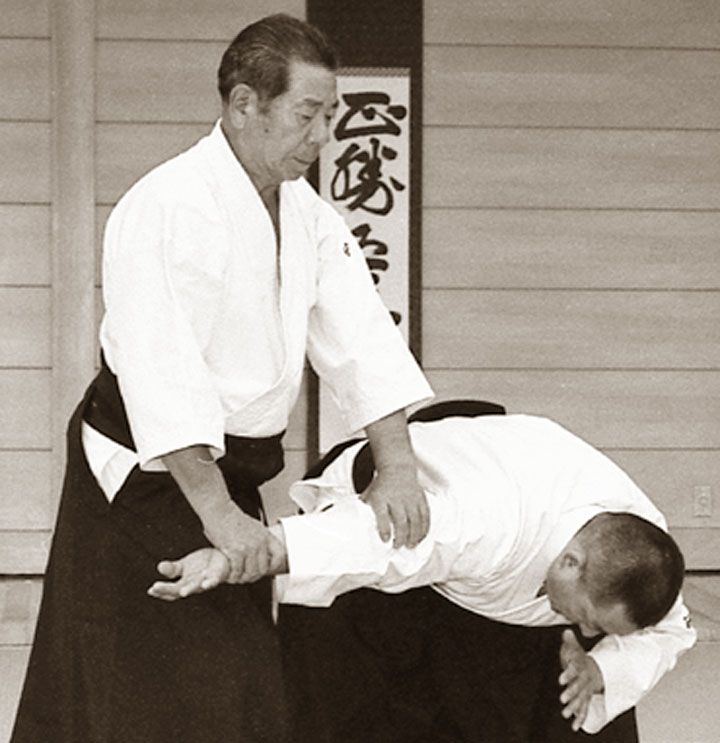As we practice Aikido, we train in basic forms, categorized in incremental exercises that are intended to show a tangible understanding of Aikido principles.
From the very first keikos on, we study the first principle -or ikkyo. The internet is plenty of very accurate descriptions about what ikkyo is or is not. For those who don’t know what we are discussing about in this article, it is worth saying that ikkyo is the principle underneath the immobilization of the partner, obtained by aligning the partner’s arm and shoulder at the same level of the seventh cervical vertebra, once the partner has been led to the ground (gently, if we are practicing Aikido…).
Doing and receiving ikkyo thousands of times -as the roles continuously change polarity on the tatami- helps to identify some boundaries that are very easy to trespass.
The boundary of the force, the boundary of the intention, the boundary of technique and the boundary of the will to control everything.
It becomes clearer training after training that very often we all rely too much on force especially when the intention is not that clear and the technical aspects become hurdles that we overcome by adding pressure and force.
But the most powerful and dangerous limit we meet in our practice, and often trespass is the will to control everything.
Controlling is an attitude. As an attitude is no bad or good. It depends on the goals we want to achieve by letting that attitude be embodied in ourselves.
We live submerged in a world that makes controlling a must -and often with our own permission. We want to be always connected just to check our e-mails, our friends’ status -and at the same time, we get controlled.
We like to think to have always the decision making ownership. We love thinking we decide.
Real life experience tells another story. It is true we feel to be directly or indirectly limited and somehow controlled: government, taxes, job, relationships, duties,…
And there is where we try to balance that feeling through the same tool: controlling others. Moreover: the more we try to control situations around us, the more we feel a sense of frustration and the more, of course, we’ll face new situations with an higher degree of frustration.
So, why would it be different when we practice ikkyo in our dojo?
In effect, it is not different. It happens a lot of times to focus every effort in achieving the perfect control of our partner.
Is that the ultimate goal? Maybe yes, if we limit the investigation to the technical aspect of the art.
But if we go a step further…Isn’t it a bit ridiculous thinking to have the full control of our partner when our partner is standing in front of us, intended as a mean, as a character of a simulated fighting environment, who will ease our learning process?
What if our partner would react in a different way?
A lot of people wastes a lot of time arguing about the efficiency of martial arts, taking personal all discussions that arise from that topic.
Reasoning about ikkyo is not speaking about the most efficient way to subdue an enemy. Rather to avoid the temptation to change control for spontaneity, the real target with one of its aspects.
So why are we invited to “be” ikkyo? Surely not for social controlling purposes. Rather to be that kind of being that is able to detach itself from the need to control something or someone, recognizing the patterns triggered by the controlling mechanisms and therefore able to let those feelings go, in order to set itself really free.

